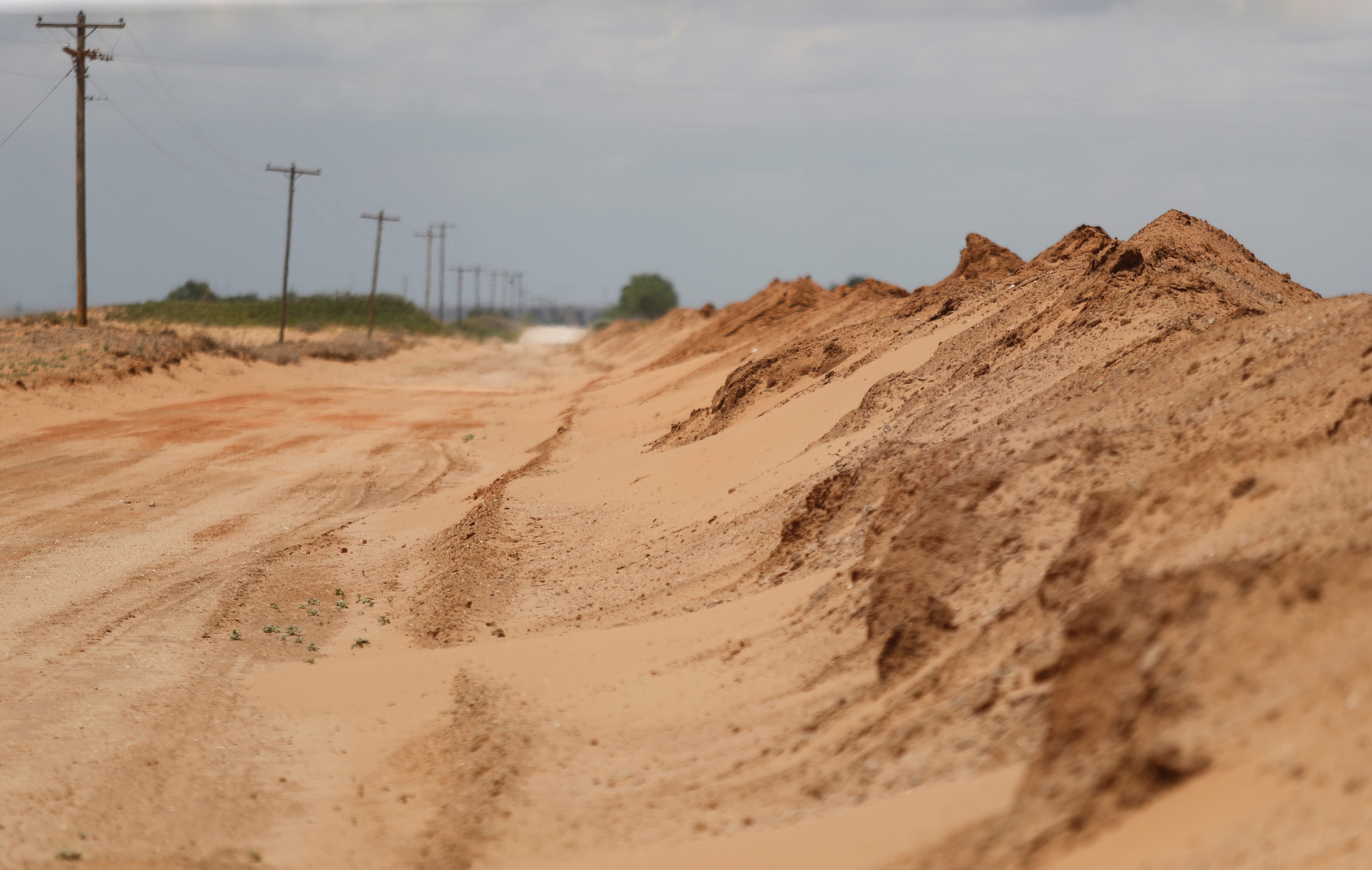Environment & Energy
Related: About this forumTX Panhandle Farmers Turn To Native Grasses To Hold Soil In Place As Ogallala Aquifer Fades
 ?width=660&height=419&fit=crop&format=pjpg&auto=webp
?width=660&height=419&fit=crop&format=pjpg&auto=webp
Sand that blew off farmers' fields is piled up in a ditch near Lingo NM near the Texas-New Mexico border on May 19th 2021 Mark Rogers/AP
MULESHOE, Texas (AP) — Tim Black's cell phone dings, signaling the time to reverse sprinklers spitting water across a pie-shaped section of grass that will provide pasture for his cattle. It's important not to waste a drop. His family's future depends on it. For decades, the Texas Panhandle was green with cotton, corn and wheat. Wells drew a thousand gallons (3,785 liters) a minute from the seemingly bottomless Ogallala aquifer, allowing farmers to thrive despite frequent dry spells and summer heat. But now farmers face a difficult reckoning. Groundwater that sustained livelihoods for generations is disappearing, which has created another problem across the southern plains: When there isn't enough rain or groundwater to germinate crops, soil can blow away — just as it did during the Dust Bowl of the 1930s.
"We wasted the hell out of the water," says Black, recalling how farmers irrigated when he was a kid — as if it would last forever. Water flooded furrows or sprayed in high arcs before farmers adopted more efficient center-pivot systems that gave the Southwest its polka-dot landscape. His grandfather could reach water with a post-hole digger. Now, Black is lucky to draw 50 gallons (189 liters) a minute from high-pressure wells, some almost 400 feet (122 meters) deep. He buys bottled water for his family because the well water is salty.
EDIT
Some are growing crops that require less water or investing in more efficient irrigation systems. Others, like Black, also are replacing cash crops with livestock and pastureland. And more are returning land to its literal roots — by planting native grasses that green with the slightest rain and grow dense roots that hold soil in place. "There's a reason Mother Nature selected those plants to be in those areas," says Nick Bamert, whose father started a Muleshoe-based seed company specializing in native grasses 70 years ago. "The natives ... will persist because they've seen the coldest winters and the hottest dry summers."
Black, who once grew mostly corn, plants such grass on corners of his fields, as pasture for his growing herd of cattle and as a cover crop between rows of wheat and annual grass. The transition to cattle, he hopes, will allow his oldest son, Tyler, to stay on the land Black's grandparents began plowing 100 years ago. His younger son, Trent, "could see the writing on the wall" and is a data analyst near Dallas.
EDIT
https://www.farmforum.net/story/news/2021/09/24/farmers-restore-native-grasslands-groundwater-disappears/8362951002/
CrispyQ
(36,424 posts)The whole book is quite interesting, & not preachy at all. He discusses how animal husbandry has changed over the years as big ag takes over family farms.
ratchiweenie
(7,754 posts)Greedy bastards.
hatrack
(59,578 posts)And of course, in Texas, there's no regulation of groundwater anyway.
If your neighbor sinks multiple wells and starts sucking up all they can use and then some, you have two recourses: (A) sink your own wells and drain as much as you can while you can or (B) do nothing.
ratchiweenie
(7,754 posts)Cadillac Desert (1986), is a history by American Marc Reisner about land development and water policy in the western United States.
My parents families are all farmers in the Texas panhandle. What Reisner has to say is dead on.
hatrack
(59,578 posts)ratchiweenie
(7,754 posts)devastating when it is gone.
msongs
(67,367 posts)NickB79
(19,224 posts)My 9th grade math teacher in 1995 told our class that the Ogallalla would be depleted by mid-century (we were learning about calculating rates of change). He made it clear how devastating this would be, so it stuck in my mind since then. Man, how time has flown.
We need to use what water and time we have left to restore the prairie before a new Dust Bowl settles in, with no telling how long it will last this time. Prairie grasses, supporting beef cattle or (preferably) ranched bison for grass-fed meat, are the only way we can keep producing food sustainably from the Great Plains in a post-irrigation world.